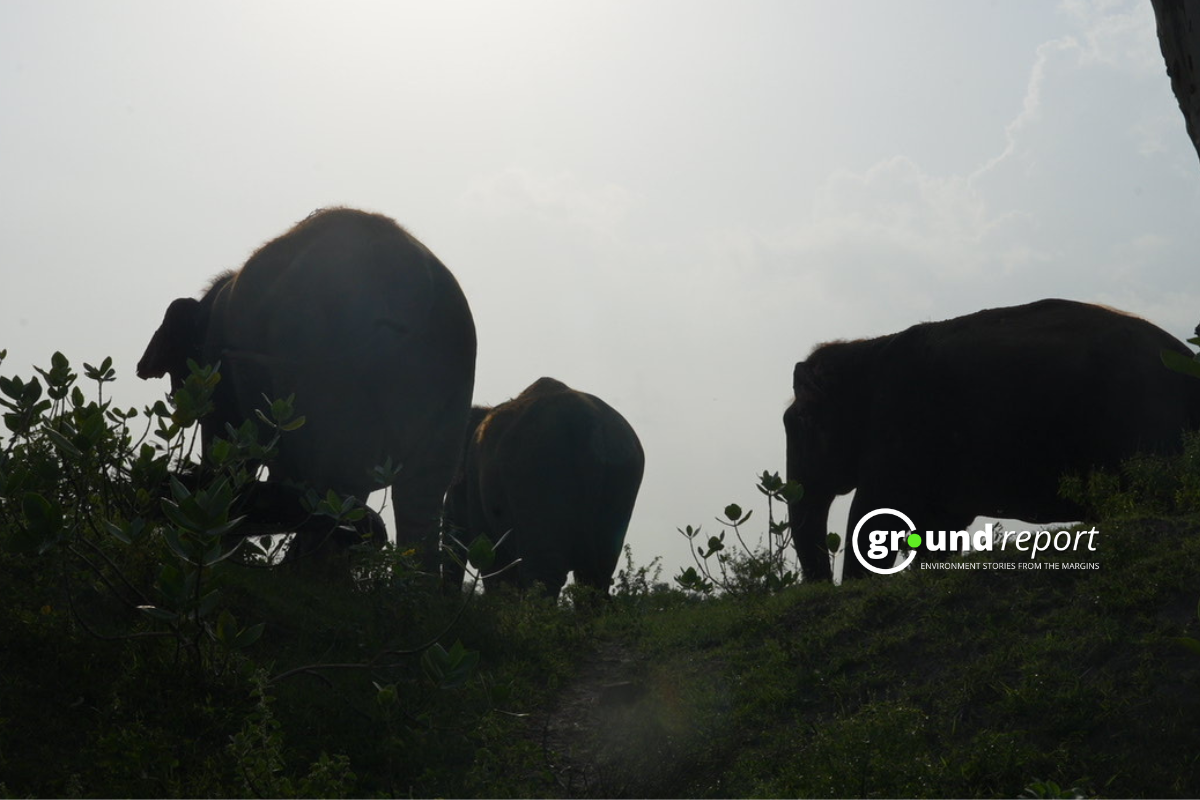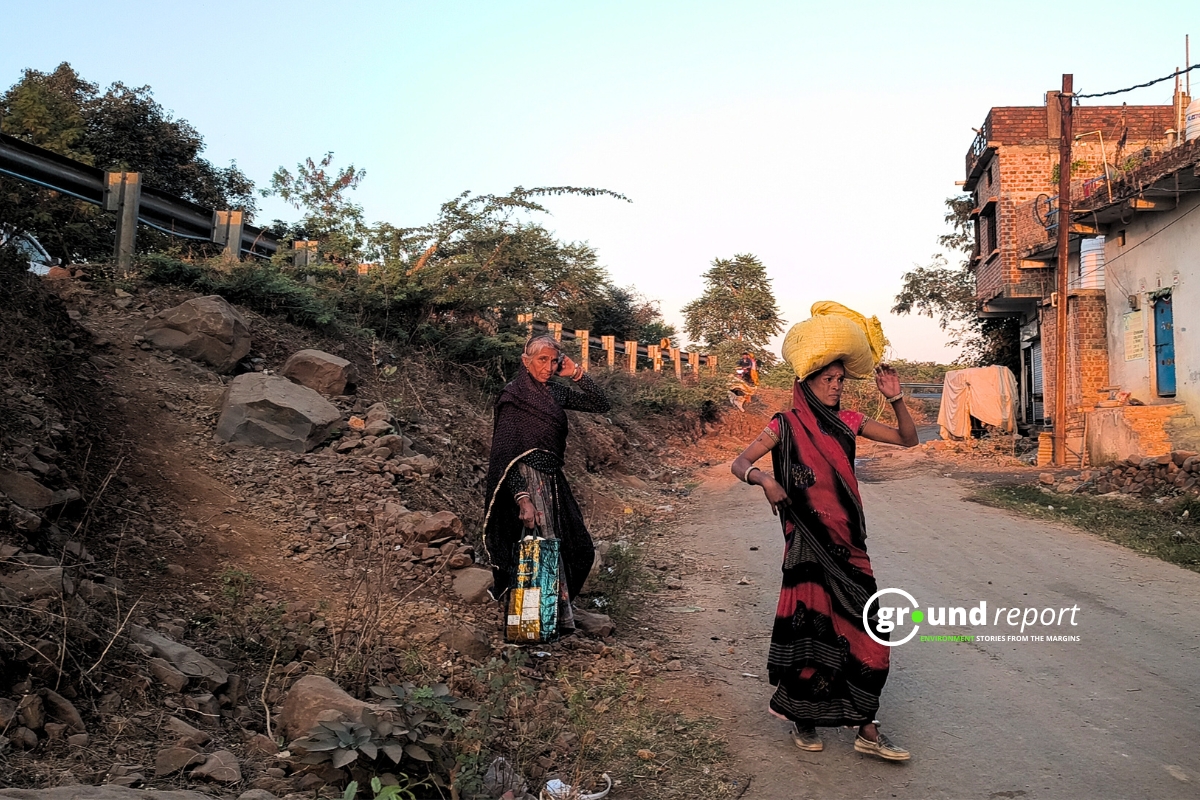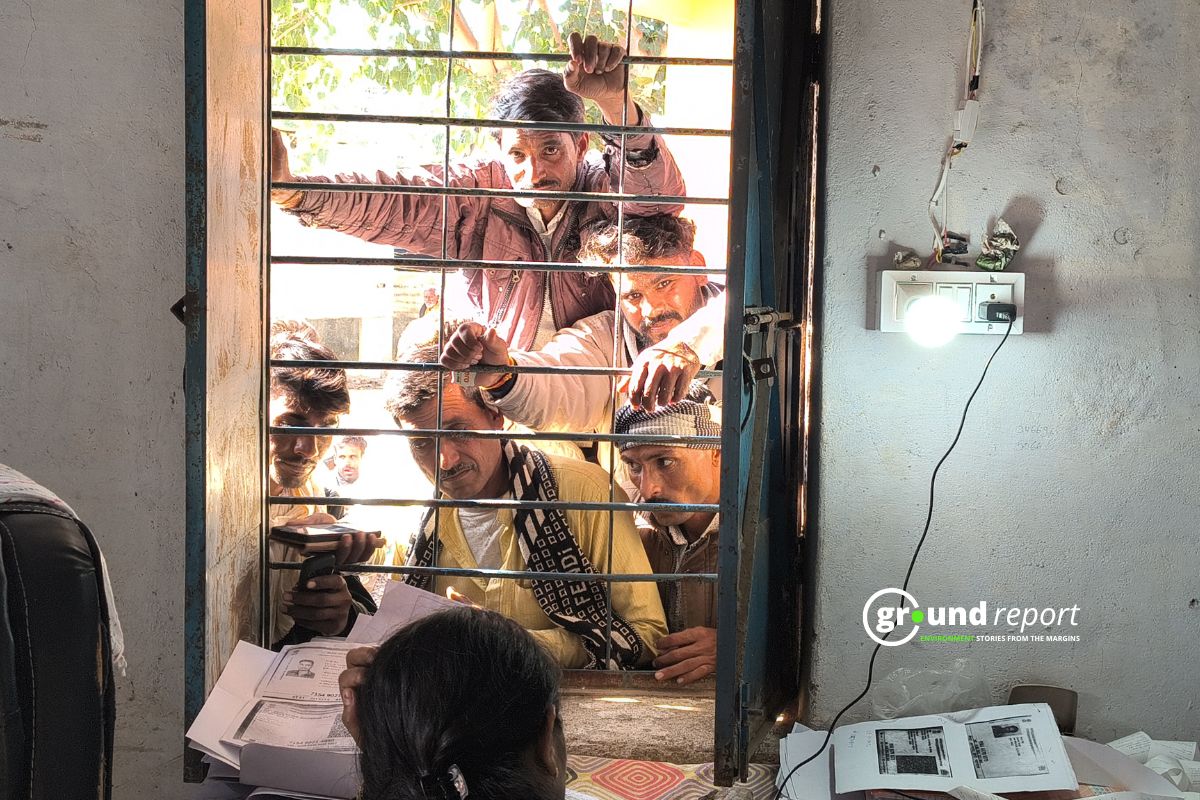Not far from the Guhwara subdivision in Chhatarpur district, Madhya Pradesh, lies the remote village of Gwalkhera, under the Gram Panchayat of Kotara. As I entered the village, I saw a group of pregnant women walking slowly, carrying empty bowls and plates in their hands. Some held their children’s hands, softly chatting as they made their way through the muddy paths.
The rain had just stopped, leaving the air cool and damp. We all arrived together at the Anganwadi Kendra, where the women were going for their weekly meals. The stairs were slick with algae, making them treacherous. As the women carefully made their way up, three of them slipped, struggling to regain their balance on the slippery steps. The scene was a quiet but powerful reminder of the harsh realities these women face daily.
Among these women was Rani, a tall, slender figure wrapped in a faded red saree. She smiled warmly at me as she waited for her bowl to be filled with kadhi chawal at the Anganwadi. Her smile was genuine, yet it contrasted with the harsh surroundings.
The Anganwadi itself felt more like an old, neglected room—its walls damp and peeling, water dripping steadily from the ceiling. The floor was wet, with puddles scattered around, and there was no sign of electricity.
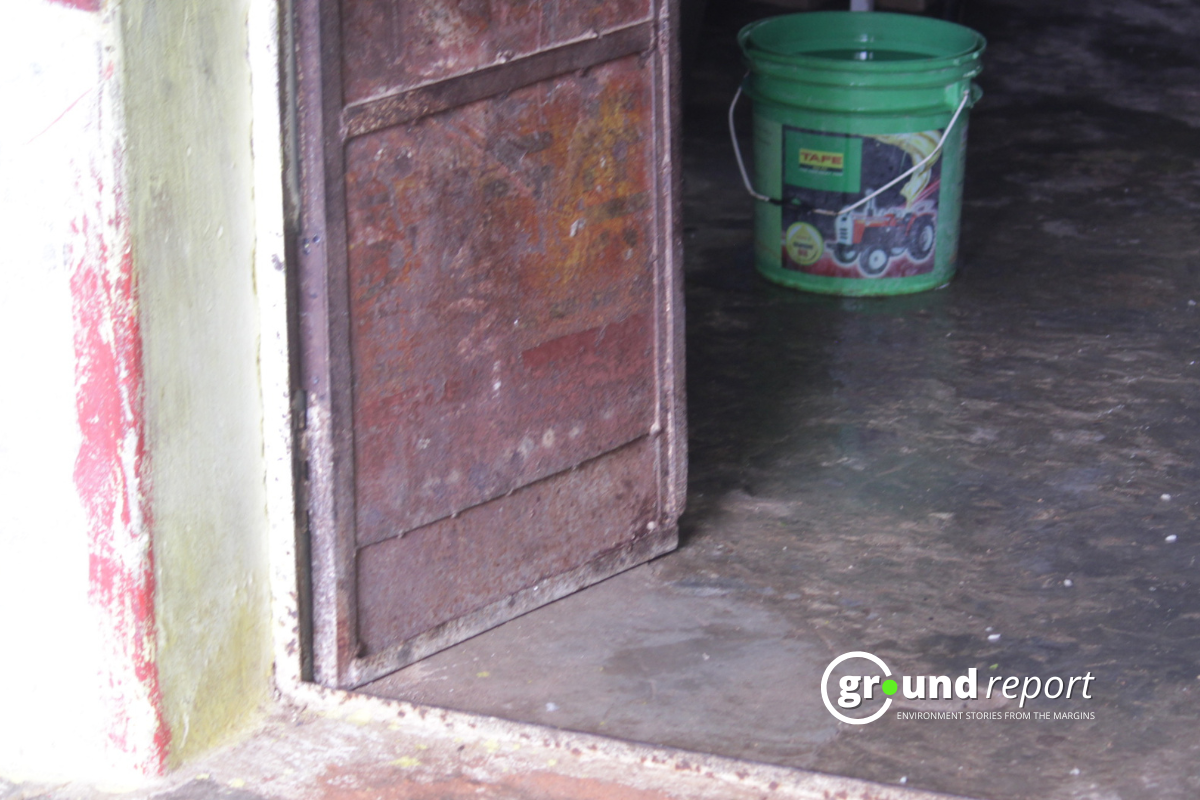
Silent struggles of Anemia
Rani Vishwakarma, a 27-year-old mother of two young daughters, ages 7 and 4, stands on the threshold of welcoming her third child. Now over nine months pregnant, she has already passed her expected delivery date, waiting anxiously yet patiently for her baby to enter the world.
As Rani quietly packed her bowl of kadhi chawal into a polythene bag, I gently asked how she was feeling. Without any expression, she simply replied, “I’m anemic.”
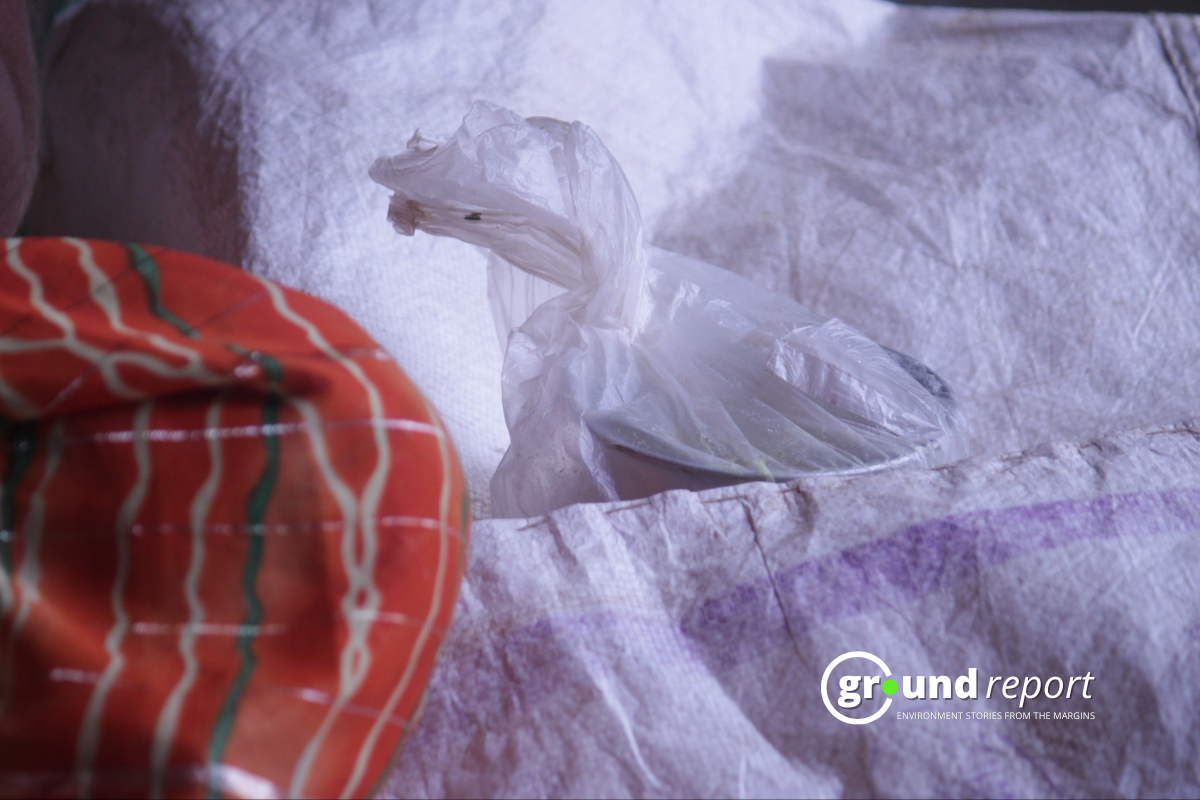
Anemia, a condition where the body lacks enough healthy red blood cells to carry oxygen, often leaves people feeling weak and fatigued. For pregnant women like Rani, this can be especially dangerous, affecting both their health and the baby’s. Yet, her voice carried no complaint, just a quiet acceptance of her reality. Maybe also because this was not the first time she was experiencing the constant struggle to beat her blood deficiency. She explained,
“In my last two pregnancies, I had to receive at least eight units of blood each time. Those were some of the hardest times for me. I felt weak—perhaps the weakest I’ve ever been in my life.”
Her words hinted at the immense physical toll her body had endured, yet the situation was worse this time.
The number of pregnant women aged 15-49 years who are anemic has significantly increased in the Chhatarpur district of Madhya Pradesh from 43% in 2015-16 to 68.3% in 2020-21, according to the latest report by the National Family Health Survey 2020-21 (NFHS-5).
Underweight and Uninformed: The Impact of Inadequate Resources
Rani, who is underweight herself, shared that both of her daughters are anemic and malnourished. During her third pregnancy, Rani had to receive six units of blood. Initially, she needed four units in the first month due to a significant drop in her blood count. Despite the doctor’s recommendation for four additional units in the fifth month, she could only afford two units due to the prohibitive cost of Rs. 5,000 per unit. She added,
“I have a big joint family. All rely on agriculture for survival. With my sister-in-law in her pregnancy as well, the family is forced to look for finances.”
Rani’s situation is not unique. Other women in the village face similar challenges. For instance, Sandhya Vishwakarma, who has a one-year-old daughter, is currently seven months pregnant and grappling with the same issues.
Sadhya, who is 24 years old, same as my age, is four months pregnant with her second child. She has been struggling with severe weight loss, and her weight has dropped to just 40 kilograms—down 7 kilograms in the past two months. This rapid decline has left her understandably worried and exhausted.
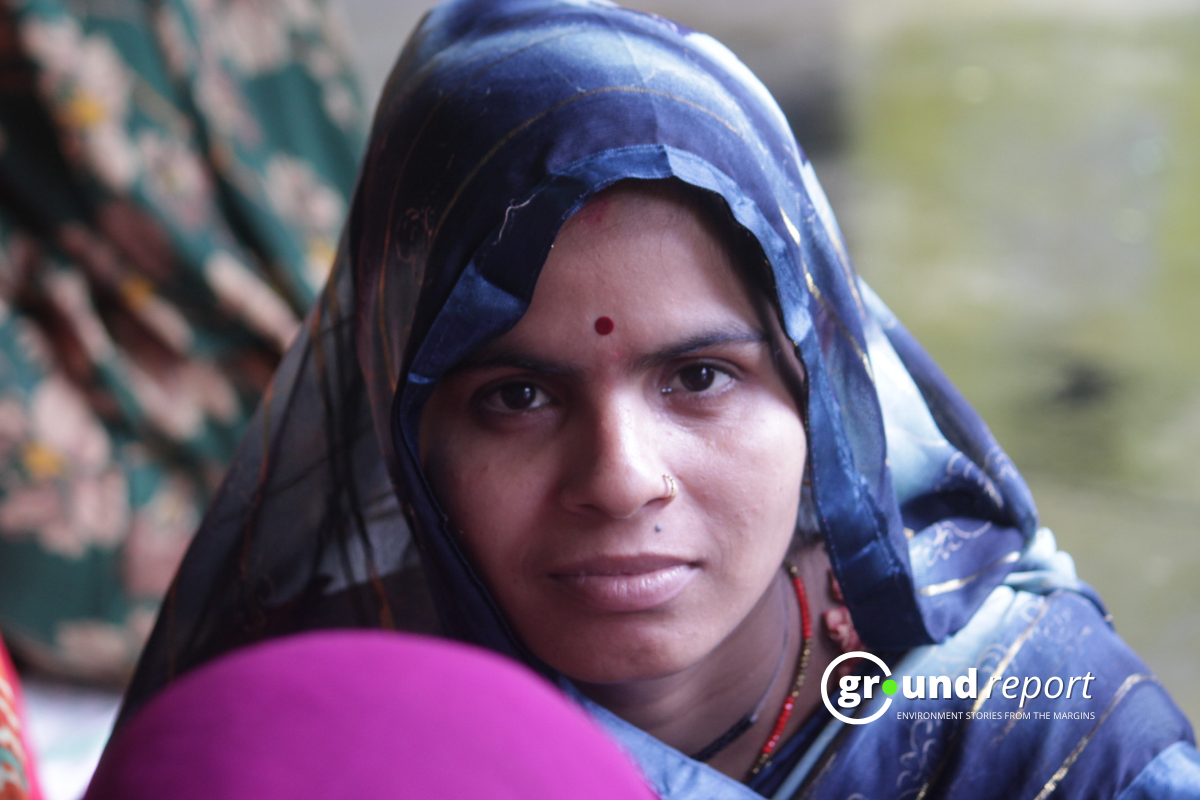
“I have no appetite and feel constantly exhausted. I also have a uterine infection, and although the doctor has prescribed medication, I haven’t been able to start taking it yet,” Sandhya shared.
The Dire State of Anganwadi
As the Anganwadi’s small room was struggling in the rainy season, Sarita Jain, an anganwadi worker in the village, talked about the issues. She told me,
“There are around 40 children under this Anganwadi. Daily we first struggle to get water out when it rains and obviously it is dangerous for the children.”
Anganwadi centers are government-supported programs in India focused on child and maternal care at the village level. Established in 1975 as part of the Integrated Child Development Services (ICDS) program, these centers aim to combat child hunger and malnutrition. Catering to children aged 0-6, Anganwadi centers provide essential health care services in rural areas. They are integral to India’s public health system, offering activities such as contraceptive counseling, nutrition education and supplementation, and early childhood education.
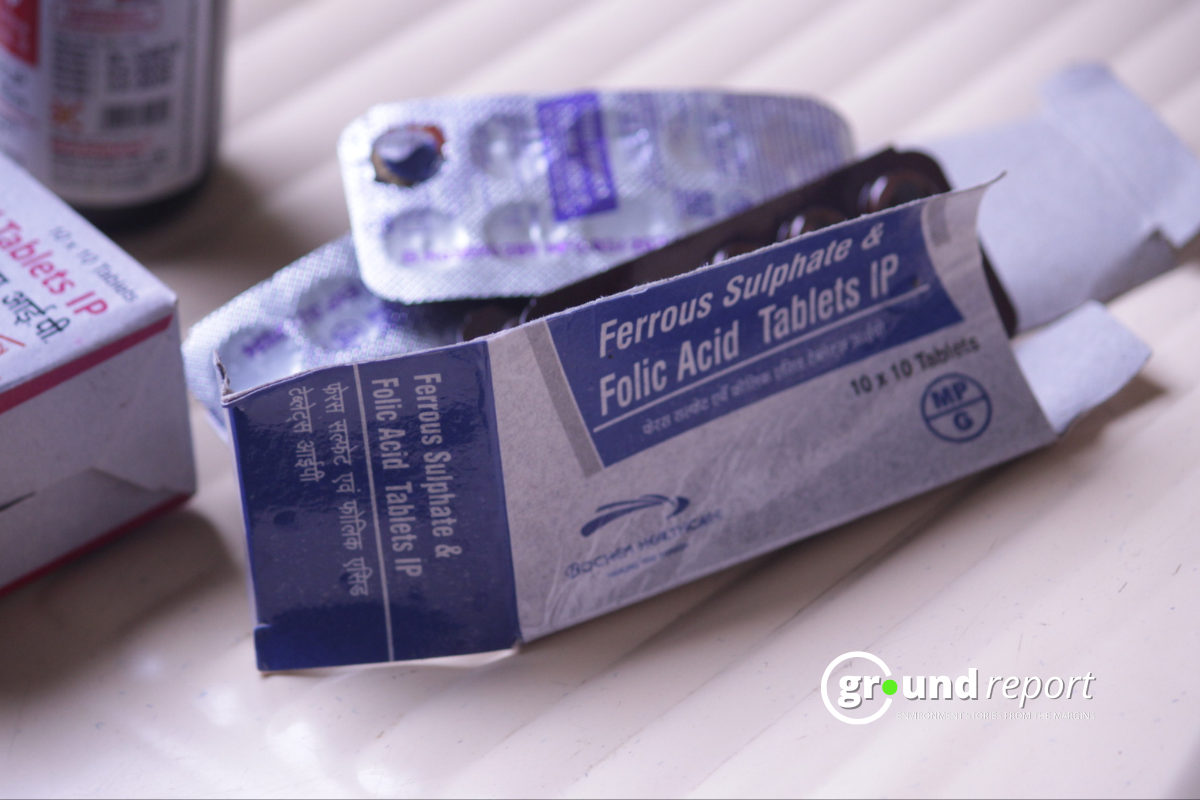
There are 14 pregnant women registered at this Anganwadi center. Every Tuesday, they receive a cooked meal, and on five other days, they get food packets that include multi-grain laddus, khichdi, and soya chunks. Despite this, Jain has reported occasional food shortages. “Sometimes, women and children leave empty-handed if the packets and cooked meals run out,” Jain explained.
The deep-rooted bias: Unspoken yearning for a boy
Hemlata Chaurasia, an Auxiliary Nurse Midwife (ANM), narrated a devastating story as I met her when she arrived after giving iron tablets to adolescent girls and pregnant women. She said,
“Just a week ago, we found a two-day-old baby girl abandoned in a nearby forest, wrapped in a shawl. It’s devastating to think that this can still happen in our world today, but sadly, people here still try to find ways to justify it.”

The majority of women with anemia and malnutrition have more than two children and also expressed that either them or their family long for a son, these regular pregnancies make them more vulnerable to the effects of anemia.
India has three cadres of Community Health Workers (CHWs). The first to be established was the Auxiliary Nurse Midwife (ANM), who operates from a sub-center and travels to villages to provide care both in the community and at the sub-center itself. The second is the Anganwadi Worker (AWW), who serves exclusively in her village, focusing on distributing nutritional supplements to young children, adolescent girls, and lactating women. The most recent addition is the Accredited Social Health Activist (ASHA), who also works solely within her village, promoting health awareness and access to healthcare services.
In 2005, the National Rural Health Mission (NRHM) was launched to strengthen primary healthcare in rural areas. This initiative further elevated the role of the ANM, making her an even more vital link between healthcare services and the community.
“I conduct four check-ups during a woman’s pregnancy, monitoring her blood pressure and weight regularly. However, my biggest challenge is convincing them and their families to take iron and vitamin tablets, as there is still a lot of reluctance,” Chaurasia added.
Failing efforts to control anemia
Approximately 1.24 billion people globally suffer from iron deficiency anemia (IDA), making it one of the leading causes of disability worldwide. It disproportionately impacts women, individuals in low- to middle-income groups, and populations in Asia and sub-Saharan Africa. Maternal anemia alone is estimated to affect 32 million women across the globe.
In India, under the Anaemia Mukt Bharat initiative, pregnant women receive daily Iron and Folic Acid (IFA) supplementation for six months, starting from the second trimester, and postnatal mothers continue this regimen after delivery to prevent anemia. Additionally, a single dose of albendazole (400 mg) is provided to pregnant women during the second trimester to reduce the risk of anemia.
The Anemia Mukt Bharat (AMB) Programme seeks to reduce anemia among vulnerable groups, such as children aged 6-59 months and adolescents aged 15-19 years. As part of this initiative, the Anganwadi Services under Mission Saksham Anganwadi and Poshan 2.0 offer universal, barrier-free support. Pregnant and lactating women are eligible for a range of services, including the Supplementary Nutrition Programme (SNP).
However, as per statistics from the National Family Health Survey (NFHS-5), more than half of the pregnant women population (52.2%) in the country between the ages of 15 and 49 years are considered anemic.
According to the World Health Organization’s Global Prevalence of Anaemia 2011 report, 50% of anemia cases are linked to iron deficiency. Other contributing factors include deficiencies in micronutrients such as folate, riboflavin, and vitamins A and B-12, as well as acute and chronic infections like malaria, cancer, tuberculosis, parasitic infections, and HIV. Additionally, inherited or acquired disorders affecting hemoglobin synthesis, such as hemoglobinopathies, are also significant causes of anemia.
Further, to combat anemia, the Government is supplying fortified rice (enriched with iron, folic acid and vitamin B12) through Targeted Public Distribution System (TPDS), Pradhan Mantri Poshan Shakti Nirman (PM-POSHAN) Scheme, Integrated Child Development Services (ICDS) Scheme and in Other Welfare Schemes (OWS) in all States and Union Territories.
The Ministry of Women and Child Development in August shared the year-wise number of beneficiaries of Anganwadi Scheme in the State of Madhya Pradesh since 2014 in Lok Sabha. It includes children 6 months–6 years, pregnant Women and lactating mothers.
Despite their efforts, there has been a decrease in the number of beneficiaries under the Anganwadi scheme since 2018. The Anganwadis often struggle to distribute supplements, and many families’ reluctance to take the medicines means they go unused. ‘
“Look at these medicines—soaked and ruined because of leaks in the Anganwadi center,” laments Jain, an Anganwadi worker.
Many women, like Rani and Sandhya, struggle with anemia compounded by deep-rooted social biases. The lack of medical support, inadequate nutrition, and societal conditioning are key barriers hindering efforts to tackle anemia among pregnant women.
Support us to keep independent environmental journalism alive in India.
Keep Reading
Chhatarpur villages embrace Solar Light Pest Traps amidst challenges
The costliest water from Narmada is putting a financial burden on Indore
Indore’s Ramsar site Sirpur has an STP constructed almost on the lake
Indore Reviving Historic Lakes to Combat Water Crisis, Hurdles Remain
Follow Ground Report on X, Instagram and Facebook for environmental and underreported stories from the margins. Give us feedback on our email id greport2018@gmail.com.
Don’t forget to Subscribe to our weekly newsletter, Join our community on WhatsApp, and Follow our YouTube Channel for video stories.




